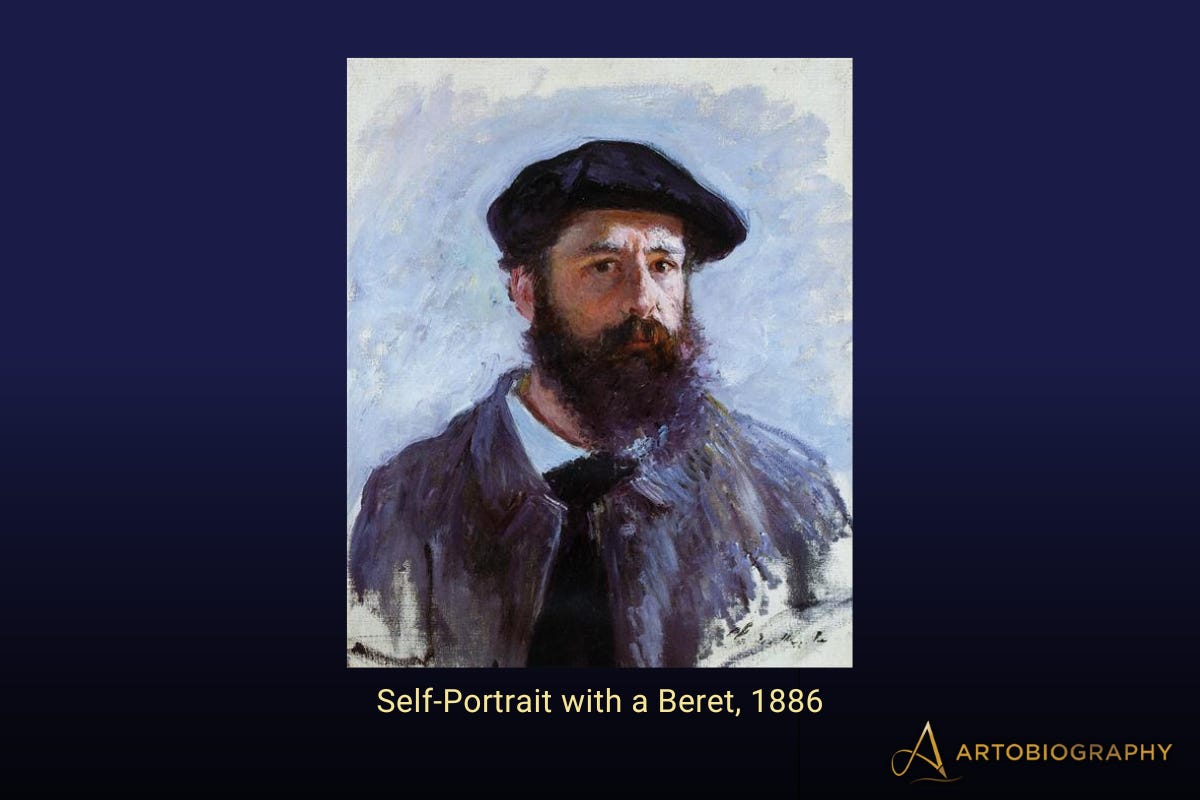How one artist's resilience and determination revolutionized the art world
Story of Claude Monet
I recently had the pleasure of reading Stephanie Cowell's book Claude & Camille: A Novel of Monet. This engaging story explores the romantic relationship between Claude Monet and his first wife, Camille Doncieux. I've always been a fan of Monet's work, but reading this novel opened my eyes to the incredible challenges he faced in his early life and the hardships he shared with many of his fellow Impressionists.
Claude Monet wasn't your average artist. He was a rebel, a visionary who refused to play by the rules of the art world. Monet had a deep love for nature and a burning desire to capture its fleeting beauty. This passion became the foundation of his life's work. But the road to becoming the father of Impressionism was far from easy.
Let’s explore the story of a man who dared to paint not just with his eyes, but with his heart, and in doing so, forever changed the way we interact with art.
Born on November 14, 1840, in Paris, Claude Monet entered a world that was rapidly changing. He pursued his artistic dreams despite initial resistance from his family.
What many don't know is that Monet's early work focused on caricatures. His transition from drawing silly faces to capturing breathtaking landscapes was more than just trying something new. It was a way for Monet to express his deep appreciation for the natural world around him.
Monet's early career was marked by financial hardships. He often relied on the support of friends and patrons to keep creating. This theme of resilience in the face of adversity would come to define his life and work.
Monet's early works were met with harsh criticism. The term "Impressionism," which we now associate with honor and prestige, was originally coined as a mockery of his painting "Impression, Sunrise."
Faced with this criticism and financial instability, Monet had to navigate a delicate balance between staying true to his artistic vision and gaining acceptance from the society around him. His commitment to painting "en plein air" (meaning outdoors) was groundbreaking, but it also posed logistical challenges, as he often painted in challenging outdoor conditions.
The Impressionists, with Monet leading the charge, faced strong opposition from the traditional art establishment for their unconventional approach. Their exhibitions were ridiculed, and their work was often rejected, leaving them in a precarious position both financially and professionally.
However, this rejection only fueled their determination. They banded together, creating a support network and organizing their own exhibitions, gradually carving out a place for their art.
Monet had a clear goal in mind: he wanted to show the world the beauty of nature, but in a way that was all his own. He wasn't interested in painting things exactly as they looked. Instead, he wanted to capture the way he experienced them - the feelings, the emotions, and the personal connection he had with the world around him.
One way he achieved this was through his series of paintings, such as the Haystacks and Rouen Cathedral series, where he depicted the same scene at different times of day and in varying conditions. These works showcased his tireless efforts to capture the transient quality of light.
To create these series, Monet often worked on multiple paintings simultaneously, each one focusing on a specific time of day to observe the subtle variations in light and atmosphere.
Monet faced challenges that went beyond the criticisms of his work and financial struggles. He experienced profound personal losses, including the deaths of his wife and son. These tragedies deeply affected him emotionally.
On top of this, Monet also had to deal with some serious health issues later in life. Rheumatism and cataracts made painting a real challenge. Despite these struggles, he did not stop. If anything, these obstacles only made him more determined to keep creating. He used his art as a way to push through the tough times, exploring new ideas and finding comfort in the beauty of nature.
Monet never gave up on his vision, and his persistence finally paid off. His series of water lilies took the world by storm, earning him international fame. These paintings were a true testament to his incredible skill in capturing light and form. At last, Monet received the recognition he had long sought.
The Water Lilies series was more than a personal victory over his critics. It marked a turning point in the history of art itself. With these breathtaking paintings, Monet solidified his place as a pioneer of the Impressionist movement. His innovative approach to capturing the beauty of nature would go on to shape the course of modern art for generations to come.
Monet's legacy goes way beyond his famous water lilies. He inspired countless artists to look at the world in a whole new way. By blending a keen eye for nature with innovative painting techniques, Monet showed us that there's so much more to light and color than it may at first appear. He changed the way we think about the natural world and how we perceive it.
Monet's true legacy isn't just the masterpieces he created. It's his courage to be different, to challenge the norms, and to follow his vision no matter what.
*****
Who is your favorite artist?








